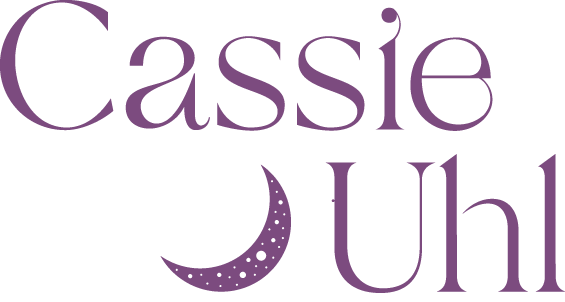3 Herbal Recipes to Enhance Your Intuition
With so many herbs available to enhance your intuition, I wanted to share a few quick DIY recipes so you can put them to use! This is my last post in a more extended series about the intuition if you missed any of the previous posts and want to check them out first, click here.Our ancestors have used herbs for more than just healing; a variety of plants have been used to connect with the psychic realm and experience spiritual awakenings since the beginning of time. The herbs suggested in this post are of the gentler variety, no peyote today! As with any herb you choose to ingest, do your research, and consider consulting your health care provider first.

With so many herbs available to enhance your intuition, I wanted to share a few quick DIY recipes so you can put them to use! This is my last post in a more extended series about the intuition if you missed any of the previous posts and want to check them out first, click here.
Our ancestors have used herbs for more than just healing; a variety of plants have been used to connect with the psychic realm and experience spiritual awakenings since the beginning of time. The herbs suggested in this post are of the gentler variety, no peyote today!
As with any herb you choose to ingest, do your research, and consider consulting your health care provider first.

Cards are featured from The Ritual Deck
Let’s take a closer look at each of the herbs I’m going to suggest for these recipes or keep scrolling to go straight to the recipes.
Lavender and Chamomile: Both of these plants are nervines and antispasmodics, which means they can calm both the nervous and muscular systems. You’ll be better able to access intuitive messages when your mind and body are calm.
Blue Lotus: Blue lotus was prized by ancient Egyptians and Mayan people for its beauty and medicinal effects. Similar to lavender and chamomile, blue lotus is a nervine and antispasmodic, which will help calm you. It also contains alkaloids that have a subtle psychoactive effect, which the ancients no doubt were aware of as well!
Mugwort: Mugwort is associated with the Goddess Artemis (the Latin name for this plant is Artemesia Vulgaris!) and the moon. These lunar ties give mugwort a strong connection to femininity, psychic work, and all things sleep-related. Mugwort is also extremely protective, making it an ideal herb to protect you while you’re opening up to the psychic world. Mugwort is not safe for pregnant or lactating women. Learn more about mugwort here.
Frankincense: Frankincense has long been associated with accessing meditation, focus, and cleansing negative energy. Often found in resin or essential oil, frankincense can be burned or diffused to clear your mind and your space for optimal intuitive connections.
Rosemary: Rosemary is one of those herbs that comes with a host of valuable benefits, including amplifying your intuition. Rosemary correlates strongly to the area of the head and will help clear out thoughts related to any worldly woes. Use rosemary to help cleanse your mind and focus on your spiritual connection. Rosemary is also helpful for clearing negative energy.
Peppermint: Peppermint is a common herb that can help you access your psychic gifts. Peppermint, similar to rosemary, is extremely uplifting and clearing for the mind. It can also help to bring you some inspiration. Peppermint is especially helpful if you’re feeling a little sluggish or having trouble focusing on your intuition.
Cedarwood: Let us not forget the necessity to stay grounded while practicing psychic work! Anytime you’re accessing higher states of consciousness or your intuition, it’s imperative to stay grounded, and cedarwood can help you do this. Cedarwood also helps to soothe and relax the third eye area. Similar to peppermint and rosemary, cedarwood will also help you clear your mind, but more soothingly because it is also antispasmodic (like lavender and chamomile).
These recipes can be used together or separately. If you feel called to one, in particular, go with that. If you want to go for a trifecta of intuitive herbal magic, try all three! Don’t be deterred if you’re missing a specific herb, and feel free to modify. Many of the herbs suggested are powerhouses all on their own.
Intuition Tea
Try this tea recipe in a warm mug or your next bath. One of my favorite ways to enjoy herbs is through a tea bath. Your skin is super absorbent; placing your herbs directly into your bath is a wonderful way to soak them up.

Anytime you’re using dried herbs for teas, you want to ensure that they’re food-grade and preferably organic. Lavender and chamomile are easy to come by at most grocery stores in tea bags, blue lotus flower, on the other hand, will likely need to be purchased online. I love everything from Anima Mundi, and they offer blue lotus flowers here.
This tea is seriously calming! I suggest drinking a cup of it before practicing psychic or intuitive work in the evening when you don’t have to go anywhere.
To make your intuition tea you’ll need:
1t. Dried Blue Lotus Flower
1t. Dried Lavender Buds
1t. Dried Chamomile flowers
Pour boiling water over your dried herbs.
Cover the mug as it steeps (this helps to keep the benefits of these plants in your tea rather than evaporating out).
Steep for 3-5 minutes.
Cool and enjoy!
Intuition Smoke Blend
This smoke blend can be used to help center your mind and create a protective forcefield around you while you practice your intuition. This smoke blend is to be used to waft around yourself and your environment before psychic or intuitive work.
I like to use an abalone shell for burning herbs, but any fire-proof dish will work. Many use a shell for burning herbs because it represents the water element. With the addition of the water element, all four elements are represented in the herb burning process (smoke- air, herbs- earth, and fire- well, from the fire). Iron cauldrons are another tool that is often used for herb burning that works well too.

Please, use caution when working with herb burning. Never leave your herbal smoke burning without supervision, always use fire-proof dishes for burning, and ensure you have proper ventilation.
To make your herbal smoke, you’ll need:
About a 1t. Dried Mugwort
About a 1t. Dried Lavender
5-10 pieces of Frankincense resin
Charcoal tablet
Sand
Fire-proof dish
Match or lighter
Place sand in your herb-burning dish; this helps to insulate the charcoal tablet and disperse the heat.
Light your charcoal and place it in the sand. You’ll know it’s lit when it starts sparking,
Place your dried herbs onto the charcoal tablet. This method of herb burning creates a substantial amount of smoke, so start with just a pinch of each herb.
Waft the smoke around yourself and your space.
Check out this video to see how it’s done.
Intuition Spray
This recipe is similar to the High Priestess Mist that Eryn shared on the blog a while ago, with a few modifications. Rosemary and peppermint are often-overlooked herbs that are quite effective at working with the third eye chakra because they help to clear the whole head area. Cedar has a similar effect but is also soothing and grounding.
I love to use this spray when I’m feeling a little lethargic or have some thoughts whirling around my mind that could impede my intuition. Spritz some of this around yourself and your space before practicing intuitive work for an uplifting and inspiring psychic aid.

To make the intuition spray, you’ll need:
Glass spray bottle
5 drops of Rosemary essential oil
3 drops of Peppermint essential oil
5 drops of Cedarwood essential oil
Enough witch hazel to fill ½ of your glass bottle
Enough high vibe-water of your choice to fill the remainder of your bottle. High-vibe water could be moon water, natural spring water, vortexed water, energy-infused water, or any combination.
Optional, amethyst, moonstone, or quartz crystals
Optional, dried blue lotus flower and lavender buds
Combine all of your liquid ingredients into your bottle.
Add any optional dried herbs or crystals.
Shake, spray, enjoy!
I hope you enjoy these recipes! Be sure to tag @cassieuhl if you make them; I’d love to see your creations. Learn more about honing your intuition in these past blog posts.
The Witch’s Herb // 3 Magickal Uses for Mugwort
Mugwort, or Artemisia vulgaris, is touted as the witch’s herb. Mugwort is a powerful plant that every witch should have in their arsenal, but the richness of its history goes far beyond the witch. Mugwort is viewed as a weed and a nuisance by some, but don’t let this plant fool you, it’s powerful and potent!Mugwort has been used for thousands of years and has a multitude of purposes, including ancient beer production, acupuncture, and protection rituals, to name a few. I’ll be focusing on ways to use Mugwort in your spiritual and magickal practice. Keep scrolling for four ways to use Mugwort.

Mugwort, or Artemisia vulgaris, is touted as the witch’s herb. Mugwort is a powerful plant that every witch should have in their arsenal, but the richness of its history goes far beyond the witch. Mugwort is viewed as a weed and a nuisance by some, but don’t let this plant fool you, it’s powerful and potent!
Mugwort has been used for thousands of years and has a multitude of purposes, including ancient beer production, acupuncture, and protection rituals, to name a few. I’ll be focusing on ways to use Mugwort in your spiritual and magickal practice. Keep scrolling for four ways to use Mugwort.

Oracle card featured from The Ritual Deck.
Space Cleansing with Mugwort
There’s been a spotlight on the overharvesting of other plants commonly used in magickal and spiritual practices like white sage and palo santo. There’s undoubtedly some truth to these claims, and white sage and Palo Santo are not always the best option. If you do feel uneasy about using white sage and Palo Santo, or simply want an alternative, Mugwort is a pleasant and powerful option.
Similar to white sage, mugwort is an antimicrobial that can be used to purify the air of your space. Science has caught up with what many of our ancestors already knew, herbal smoke of certain antimicrobial plants can kill bacteria, and mugwort is one of them!
Mugwort has a light, earthy, and slightly sweet aroma. Many prefer it to white sage, myself included. To burn mugwort for energy cleansing you’ll need dried mugwort that’s either loose or in stick form. Use mugwort smoke to cleanse your space by wafting the smoke around with your hand or a large feather.

Beyond cleansing the air of your space, burning mugwort will offer protection and enhance your intuition. Keep reading for more about using mugwort for protection and intuition.
Protection with Mugwort
It’s quite astonishing how many cultures have relied on Mugwort as a protective tool. Native American cultures have used mugwort as a form of protection against ghosts, and as an amulet during sleep to protect against nightmares. In China, mugwort was used to dispel evil spirits during the Dragon Festival. There’s even a reference to St. John the Baptist wearing a wreath of mugwort as protection against evil spirits. In Europe, mugwort was often planted around houses as a form of protection.
Here’s a list of ways to employ the protective benefits of mugwort in your practice:
Burn dried mugwort in loose or stick form to cleanse and protect your space before performing psychic and intuitive work.
Hang mugwort above doorways to prevent negativity from entering.
Plant mugwort around your house for external protection. Be careful, this plant is invasive and can spread quickly!
Make a satchel of dried mugwort to carry with you for protection on the go.
Magick & Psychic Work with Mugwort
Mugwort is associated with the Goddess Artemis and the moon. These lunar ties give mugwort a strong connection to femininity, psychic work, and all things sleep-related. Another reason for using mugwort while practicing psychic work is how protective it is. Performing psychic work makes you vulnerable to psychic attacks and other negative energies. The protective properties of mugwort are another likely reason it became such a popular tool for witches.

Oracle cards featured from The Ritual Deck.
Here are some ways to use mugwort as a magickal tool:
The next time you’re doing a card reading or any other intuitive work, aid your intuition by burning some mugwort or drinking a cup of mugwort tea before you begin your practice. Note: Pregnant or nursing women should not consume mugwort.
To enhance your dreams, receive messages in your dreams, and practice lucid dreaming, place a pillow of dried mugwort under your pillow as you sleep.
Create a psychic protection charm bag.
Steep mugwort in a bowl of water to use as cleansing water for your psychic tools, only the ones that can get wet, of course! This is a great option for crystal balls, pendulums, and mirrors used for scrying.
If you have access to mugwort plants, their stalks are hearty and make beautiful wands for circle casting and spellwork.
Mugwort is associated with the crone phase of the Triple Goddess and is an excellent plant to work with when working with this energy.
Mugwort has been revered for its medicinal uses as well, especially in women, but that’s a post for another day! If you want to learn more about mugwort, I encourage you to continue to research it, and there’s much to gain from this magickal plant.
How to Tap Into Your Resiliency (And Why You Should)
Resiliency is about your comeback rate.It’s not about never getting knocked down, or dropping into fear, or letting your ego drive the car. It’s about how fast you can come back: to joy, to love, to trust, to who you really are.Because we’re all humans, and life can be really messy. Sometimes things happen to us, sometimes we hurt people, and sometimes we forget our divine nature.
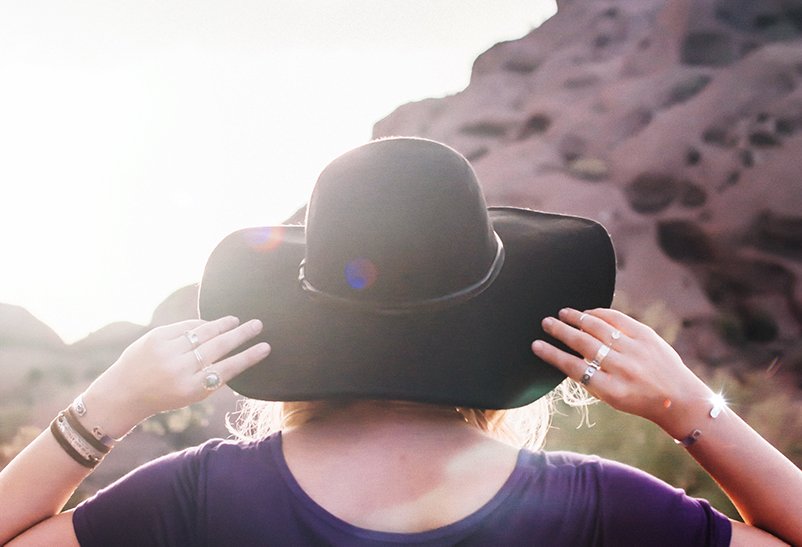
Resiliency is about your comeback rate.
It’s not about never getting knocked down, or dropping into fear, or letting your ego drive the car. It’s about how fast you can come back: to joy, to love, to trust, to who you really are.
Because we’re all humans, and life can be really messy. Sometimes things happen to us, sometimes we hurt people, and sometimes we forget our divine nature.
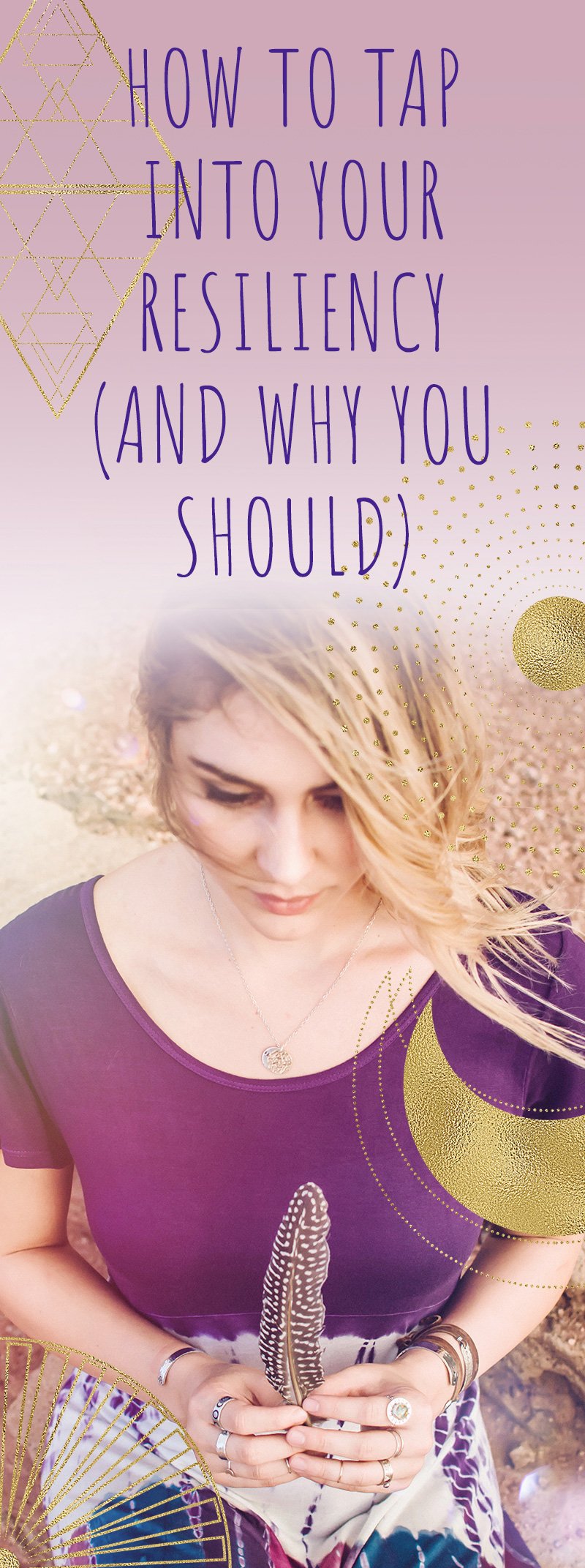
That’s where resiliency comes in. Resiliency is here to bring you back to trust when bad situations happen, to bring you back to love when fear starts to take over—even stronger and wiser than before, with an even deeper and more meaningful connection with yourself.
You may have heard before that you can only go into joy and pleasure as deep as you’ve gone into your pain. This is a necessary part of living and an important part of your spiritual practice. But that doesn’t mean you have to or even can live there.

Think of the moment you connect with your resiliency and come back to joy as the Temperance card in the tarot. You’ve been through death, but you’ve come through it into the magic of rebirth, of stillness, of calm. There are still more challenges ahead (the Devil card is next) but you can know that and still be in a place of Temperance.
Scroll down to get some tips to help you tap into your own resiliency and strengthen that connection.
Lean on your community.
You don’t have to do it alone. Who are the people you trust to tell it like it is, lifts you up, and not judge you? Whether it’s your mom, a close friend, or your sister, don’t be afraid to call on that person or those people to help you when you need it.
Look for the lesson or greater meaning.
You don’t have to believe that everything happens for a reason. But look for the greater meaning or lesson in whatever it is you’re going through— and if you can’t see it yourself, ask your community to help you find it.
I find that the tarot is an incredible tool for this. Each card of the Major Arcana is a step on the journey to the World, a card of wholeness and joy.
Try laying out each of the Major Arcana cards in front of you and asking yourself which card you’re in.
Are you dealing with a shedding of your former self, of parts of your life? Maybe you’re in Death.
Are past hurts keeping you in fear? Maybe you’re in the Fool reversed.

Each card can help you realize which lesson you’re learning right now. Once you pick your card, look at its place in the journey. See the greater context of where you’re heading—to the vibrant energy of the Sun, to the wild juicy feminine of the Moon, to the wholeness of the World.
Why do you do what you do in the world?
Whatever your greater purpose is, connect with that and remember that you are on this planet for a reason. You are here to bring forth what only you can bring forth, and the world needs.
So rest, feel your feelings, go through what you’re going through, and know that ultimately you will get through it because you are here to fulfill your greater purpose.
Connect with your intuition.
Is this ever not the answer? Connecting with your intuition can help you see the greater meaning in what you’re going through. It can help you know when you need to reach out for support and who to reach out to. It can help you know the best path to take forward.

If you’re feeling blocked, one simple thing you might like to do is ask your oracle or tarot cards, “What message does my intuition have for me right now?”
Get more tips to connect with your intuition in this post.
Find what makes you feel good.
When you feel stressed, upset, or you’re going through a difficult time, what are some simple things that help you feel better? Think about what they are for you (use the list below to spark your creativity) and write them down on a piece of paper that you can return to when things aren’t easy. Some ideas are:
Dancing
Doing yoga
Rubbing your feet with oils
FaceTiming that friend or family member who always knows what to say
Reading your favorite book
Spending more time alone
Spending more time with people you care about
Taking a walk
Playing a singing bowl
Listening to an inspiring podcast
Eating your favorite meal
Being held
Drinking a cup of tea
Receiving energy healing
Journaling
This is going to be super unique for everyone, so think about what it is for you!
Move your body.
You’ve probably heard a yoga teacher talk about how what you do on your mat is a mirror for life: what you do when it gets hard, how you talk to yourself, how you move through transitions.
It turns out, even science knows that’s true. The researchers who wrote the book Resilience: The Science of Mastering Life's Greatest Challenges actually found that the most resilient people in their studies had exercised regularly.
It turns out, that the stress of exercise helps us adapt to the stress of life challenges. So however you like to move, whether it’s yoga, running, weightlifting, dancing, jumping rope, or something else, try to make it a regular part of your life. It will actually help you be more resilient!
Heart-opening Yoga practice & breathwork to cultivate self-love
Every February, we’re reminded of the love that already exists within us. While there are so many different kinds of love in our lives, it all starts with us: from a place of deep self-love. In this blog, I’ll be sharing a heart-opening yoga practice and a Kundalini breathwork meditation to help you cultivate self-love.

Every February, we’re reminded of the love that already exists within us. While there are so many different kinds of love in our lives, it all starts with us: from a place of deep self-love.
In this blog, I’ll be sharing a heart-opening yoga practice and a Kundalini breathwork meditation to help you cultivate self-love.
Kundalini Breathwork meditation
This Kundalini yoga breathwork meditation is said to help give strength to your heart and open up your heart center.
Find a comfortable seat and extend your arms straight out in front of you. You want them to be parallel to the mat with your palms facing down. Close your eyes and focus your inner gaze at the center of your chin. Start to take long, slow, deep breaths, holding your arms steady in front of you.
Hold this breathwork meditation for three minutes. Then, move into our asana practice below.

Yoga practice
This yoga practice is focused on heart-opening yoga poses because heart openers, like the name suggests, help balance and open your heart chakra. Your heart chakra is the center of giving and receiving love in your body. Opening this center helps open you up to a flow of unconditional love within and outside of yourself.
Heart bench
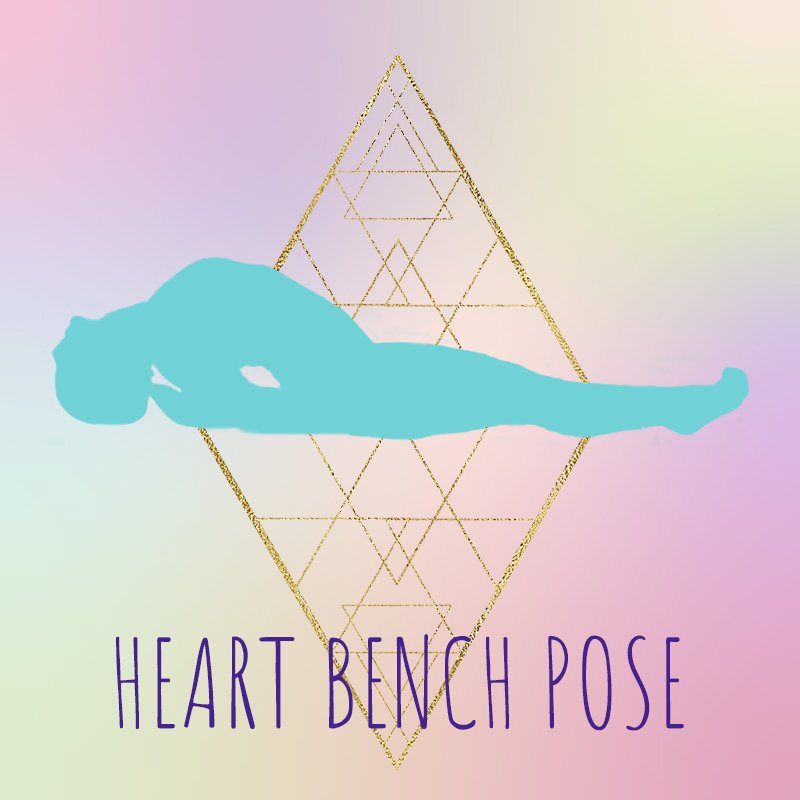
As someone with chronically tight shoulders, heart bench is my favorite restorative pose to start off a yoga practice. For this pose, you’ll need two yoga blocks. If you don’t have blocks, try getting creative with stacks of books or a rolled yoga mat under the shoulders.
You’ll take your first block at either its low or medium height and place it lengthwise along the spine between the shoulder blades, opening the heart. The second block will go under your head at whatever height supports a long neck and open throat.
Breathe into your heart space here, visualizing each inhale sending breath into the chest and each exhale softening, opening, and expanding your heart chakra. Stay here for 3-5 minutes, breathing deeply.
Half-pigeon variation

To transition out of your heart bench, lower all the way onto your back, bend your knees, and press your whole back into your mat. Feel your whole back grounding into the Earth, resetting the spine.
When you feel ready, cross your right ankle over the bottom of the left thigh (right under the knee). Then prop yourself up on your forearms and roll the shoulders back to open the heart as you energetically push your right knee away from you, stretching the hips. Spend a minute or two here, breathing deeply into the heart center, and then repeat on the other side.
Low lunge
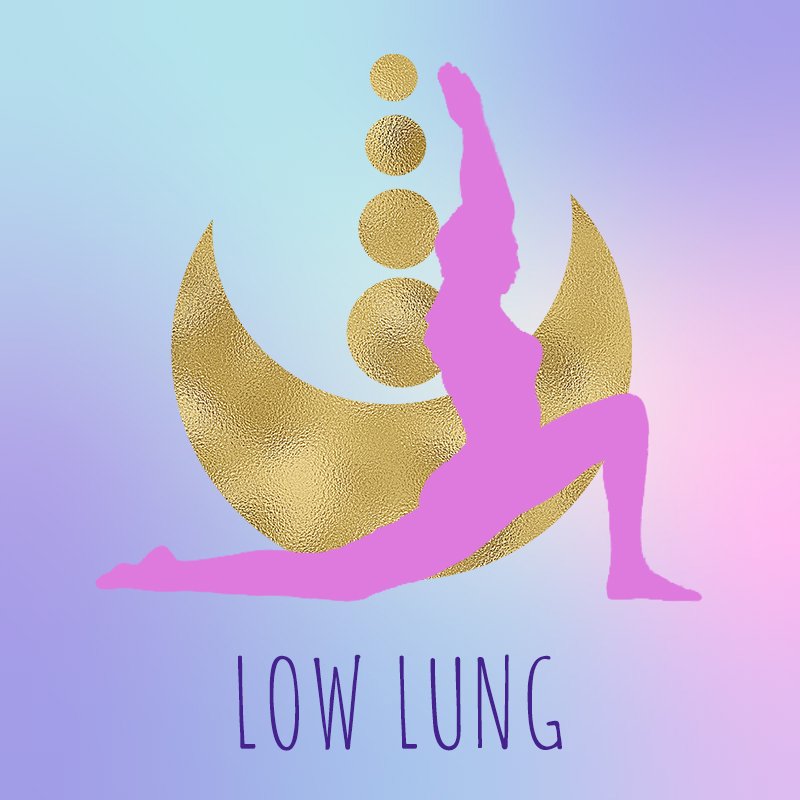
Slowly find your way to downward-facing dog and pedal out the feet. When you feel ready, inhale to step your left leg forward. Lower the knee onto a mat or blanket, and create enough space in the hips so that you can really feel a stretch into your right hip flexor. Inhale to lift the arms overhead, bending back into a crescent lunge.
After a few breaths with this arm variation, stack your palms over your heart and breathe into your hands, keeping your back bending.
Stay here for ten more breaths, then repeat on the other side.
Mountain pose flow
From your lunge, step the back leg forward into a forward fold at the top of your mat. Hold opposite elbows to help pull your chest to your thighs and find a few breaths here.
When you feel complete, release your arms and inhale to a flat back, palms to shins or thighs. Exhale to fold forward. Inhale to roll all the way up to stand, reaching up and back. Exhale to fold all the way forward as you chant “YAM” (pronounced YUM), the bija mantra for the heart chakra.
Continue to flow with your breath for at least 10 complete cycles. Let yourself find a rhythm and find softness through the face, the knees, the heart, as you move.
Dancer’s pose

After your last exhale, hold in your favorite version of forward fold for a few more breaths. When you feel complete, inhale to roll up through your spine and find mountain pose with your arms at your sides.
Create a stable foundation by grounding down through your left foot, pressing into all four corners of the foot and through each of the toes. Bend your right knee and take the ankle into the right hand behind you. Inhale to lift your left arm over your head.
Feel free to stay here. If you’d like to go deeper, use your next exhale to slowly kick your right foot back and hinge forward at the hips, opening your heart and your right hip flexor. Stay here for at least 10 breaths. If you find yourself feeling unsteady or falling out of the pose, practice talking to yourself in a loving way and come back into the pose without judgment!
After ten breaths or whenever you feel ready, use an exhale to release everything back down and take the post to your other side.
Cobra pose or upward facing dog

From mountain pose at the top of your mat, fold forward, and step back to downward-facing dog. Inhale to shift forward to plank and exhale to either lower halfway or lower all the way onto the belly. Inhale to lift into cobra or upward facing dog. Stay here for a few breaths, rolling the shoulders back, pressing into the tops of the feet, and firming through the legs. After a few breaths, exhale to shift back to downward-facing dog.
Repeat this sequence one to three times, then stay in downward-facing dog for a few breaths.
Child’s pose
Inhale to lower your knees, and exhale to shift your hips back into your favorite variation of child’s pose. Let this child’s pose be a place of deep presence with yourself — with your breath, with any feelings or thoughts that are coming up to the surface. Practice speaking to yourself lovingly and tending to yourself with care. Stay here for about twenty breaths.
Cat/cow flow
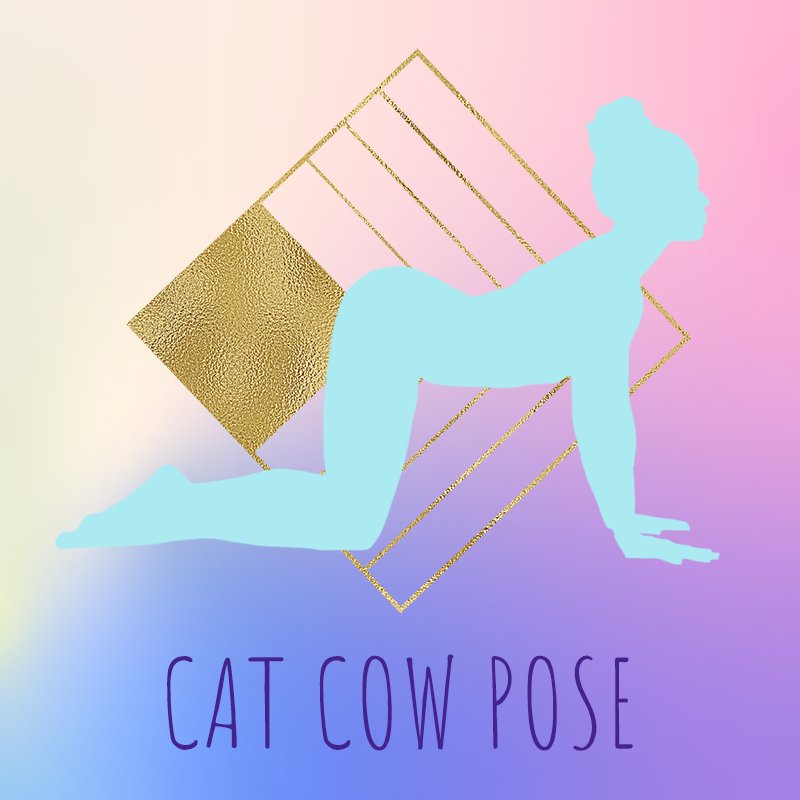
From child’s pose, inhale to lift yourself into tabletop. Start to move through a cat/cow flow with your breath, using your inhale to lift your tailbone and open your heart, and your exhale to round through your spine and tuck your chin. Feel free to add in any other movements that feel good to you, like opening up through the sides of your body or incorporating hip circles.
Heart to Earth pose

When you feel complete in cat/cow, find your way back to a neutral spine. Start to walk your palms out in front of you, keeping your hips stacked over your knees, slowly lowering your chest and forehead all the way to your mat.
This intense pose invites us into a place of deep surrender. Keep your awareness on your breath, sending it into your heart space, and let yourself be with whatever comes up here. Stay here for at least 10 breaths, but feel free to stay longer if that feels right for you.
Bridge pose
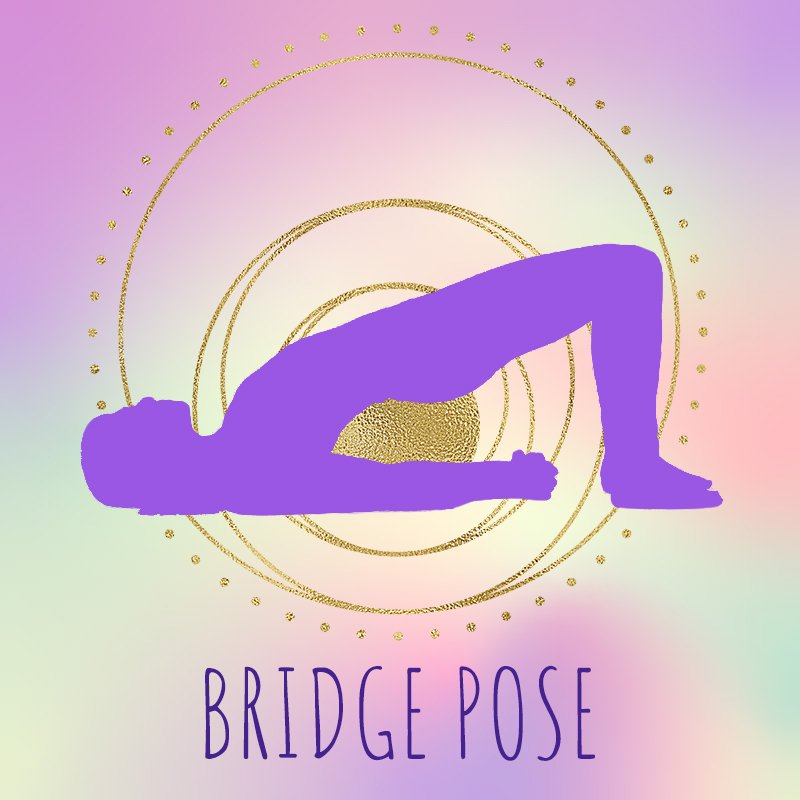
Slowly shift back into tabletop and all the way onto your back, bending your knees and planting your feet on your mat. Inhale to slowly lift your hips and lift your arms all the way overhead, backs of palms touching down behind you. Breathe here in this bridge pose variation for 10 breaths, using an exhale to slowly lower your hips and arms back down.
Find a counterpose after you come down by walking your feet wider than hip’s distance and releasing your knees to rest in on each other. Place your palms on your belly and rest here for 5-10 breaths.
Reclining cobbler pose

Find your savasana in reclining cobbler’s pose, bringing the soles of your feet together. Rest one palm on your heart and one palm on your belly, letting yourself rest, relax, and integrate the benefits of your practice. Stay here as long as you like, but make sure you let yourself spend at least three minutes here.
Explore more blogs to help you cultivate self-love here:
What Are the Doshas & How to Determine Yours
Ayurveda is known as the sister science to yoga. It’s a traditional Hindu system of medicine developed in ancient India, based on holistic integration of mind and body for optimal balance and health.The word literally translates to life science or knowledge, showing Ayurveda’s holistic approach to health. Unlike Western medicine, Ayurveda focuses on food and lifestyle, rather than medication, and prevention to help you get healthier before you get sick.
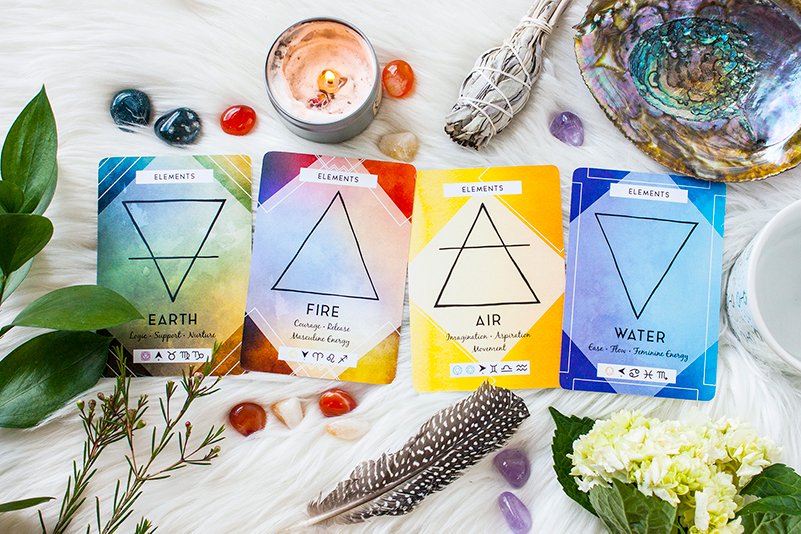
Ayurveda is known as the sister science to yoga. It’s a traditional Hindu system of medicine developed in ancient India, based on holistic integration of mind and body for optimal balance and health.
The word literally translates to life science or knowledge, showing Ayurveda’s holistic approach to health. Unlike Western medicine, Ayurveda focuses on food and lifestyle, rather than medication, and prevention to help you get healthier before you get sick.
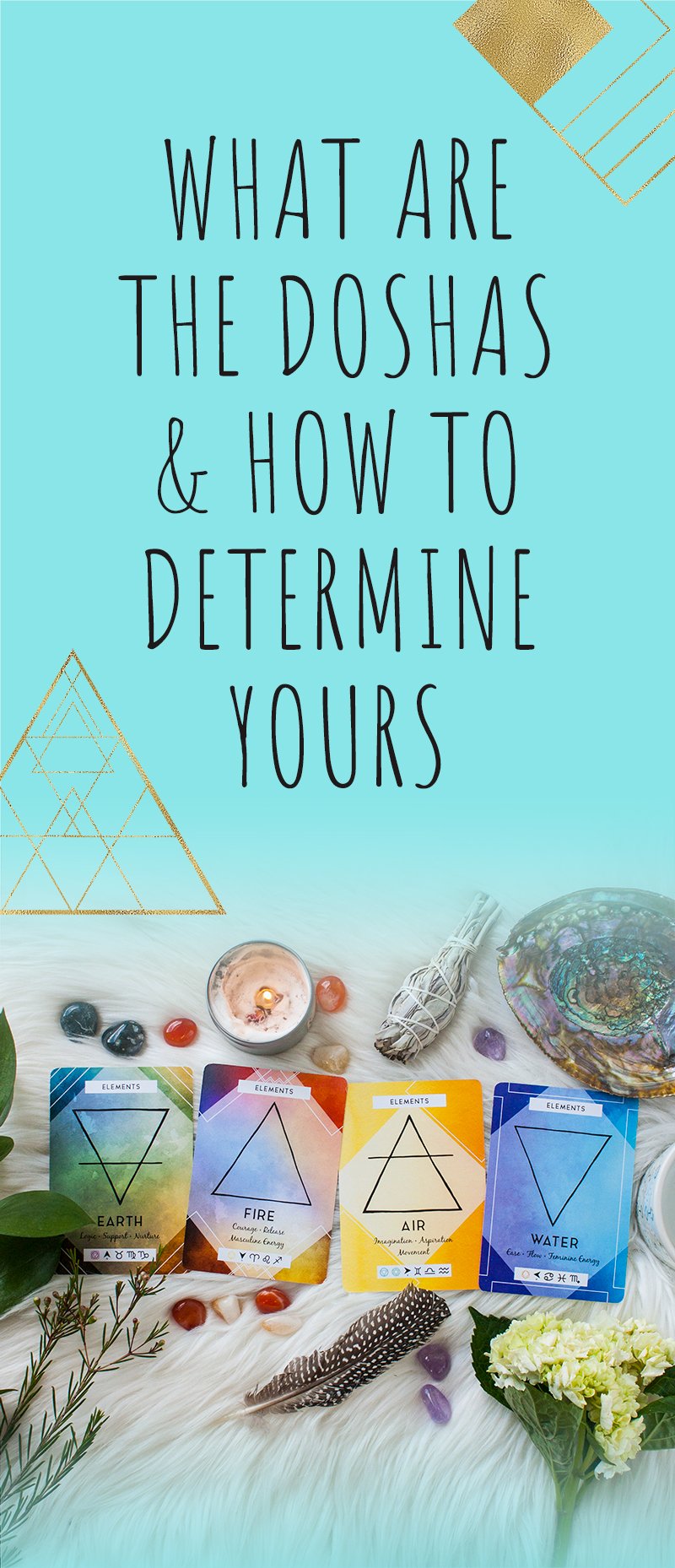
Ayurvedic Doshas
Doshas are the different types of energy in your body. Each dosha is associated with different elements and qualities, which I’ll get into below.
We’re each born with a specific dosha constitution, or makeup. We can learn a lot about what’s best for our bodies by understanding our our dominant dosha constitution.
There are three doshas: Vata, Pitta, and Kapha. Each of us has all three doshas within us, but we are typically dominant in one or two doshas. The qualities of each of these doshas manifest in your mental, physical, and emotional bodies (remember that holistic approach I talked about above!).
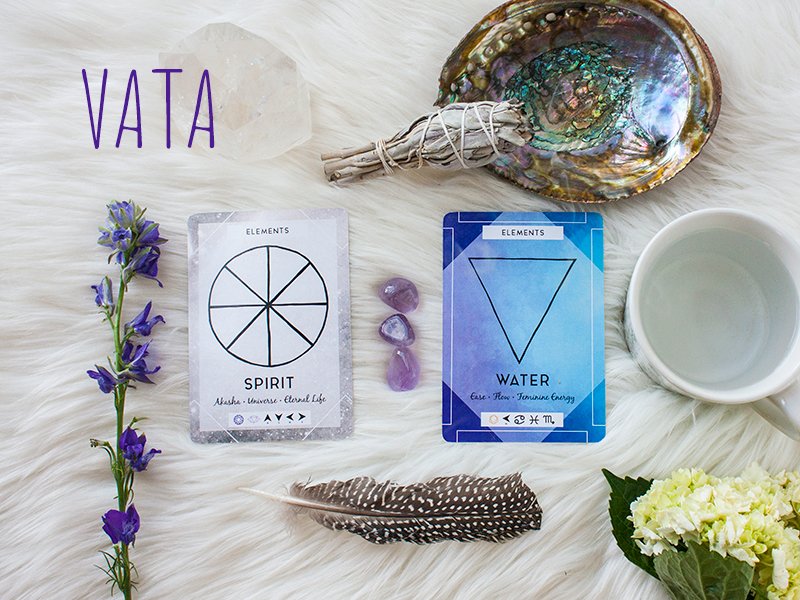
Vata is composed of space and air. Its qualities are dry, light, cool, rough, subtle, and mobile. You may be more Vata if you…
Tend to get stuck in your head or get more anxious energy
Have a lot of active, creative energy
Have dry or brittle skin and hair
Tend to run cold
Get constipated easily
Sometimes feel “spacey”
Have a thinner, lighter frame

Pitta is composed of fire and water. Its qualities are oily, sharp, hot, light, fleshy smelling, spreading, and liquid. You may be more Pitta if you…
Have active digestion
Usually run hot
Have oilier skin
Have to eat regularly and may get lightheaded or cranky if you miss a meal
Have a more fiery, aggressive personality
Get sweaty easily
Are a leader

Kapha is composed of water and earth. Its qualities are unctuous, cool, heavy, slow, smooth, soft, dense, viscous, and stable. You may be more Kapha if you…
Tend to need more sleep
Have a heavier frame
Have dense, thick hair
Move more slowly
Tend to get excess mucous
Are fairly laid-back
Are well-grounded
Are an empath or very sensitive person with a big heart
These are general guidelines. I recommend taking this quiz from Banyan Botanicals to find out for sure!
How to balance your Dosha
So you’ve discovered your dosha constitution. Now how do you balance it?Ayurveda uses the principle of like increases like, and therefore you can look to opposites as medicine.For those of us more dominant in Pitta energy, you can balance that Pitta by focusing on:
Sweet, bitter, and astringent tastes (think sweet potatoes and basil for sweet, turmeric and cumin for bitter, avocado and apples for astringent)
Cool and dry environments
Cultivating practices that help you go with the flow rather than force
Fresh, cooling foods
A cooling, relaxing yoga practice
For those of us more dominant in Vata energy, you can balance that Vata by focusing on:
Sweet, sour, and salty tastes (think dates and cashews for sweet, lemon and pickles for sour, and celery and sea salt for salty)
Calm, grounding environments
Stabilizing routines
Wetter, warmer climates
Warming, mushy foods like kitchery and soup
Doing one thing at one time (not multitasking)
Regular meditation
A warming yoga practice that cultivates fluidity and is easy on the joints
For those of us more dominant in Kapha energy, you can balance that Kapha by focusing on:
Pungent, bitter, and astringent tastes (think onion and garlic for pungent, turmeric and cumin for bitter, and avocado and apples for astringent)
A warm, dry climate
Warming, light foods (nothing too heavy)
An active routine including things like biking, running, and hiking
A more challenging, intense yoga practice in a warm environment
Learn more about the elements that make up the doshas from The Ritual Deck (pictured).
Resources for further study
As you can imagine, Ayurveda is a complex, in-depth system that you’re not going to learn in one blog post. If you’d like to go deeper, I recommend checking out some of these resources:
Ayurveda: The Science of Self Healing by Dr. Vasant Lad
The Complete Book of Ayurvedic Home Remedies: A Comprehensive Guide To The Ancient Healing of India by Dr. Vasant Lad
Ayurveda by Sahara Rose
The Everyday Ayurveda Cookbook by Kate O’Donnell
How to Open Your Sacral Chakra & Know When it's Blocked
The sacral chakra, Svadhisthana, is one of the chakras I personally feel most connected to. I think in the spiritual community, we can sometimes forget how important the lower chakras are, but remember: you are a spiritual being in a physical body! So the chakras we tend to associate with our physical bodies more, like the root, sacral, and solar plexus chakras, are just as important as the higher chakras like your crown and third eye.The sacral chakra is your center of creativity, sexuality, and feeling. It’s ruled by the element of water, and it’s located at the center of your low belly about three inches from your navel.
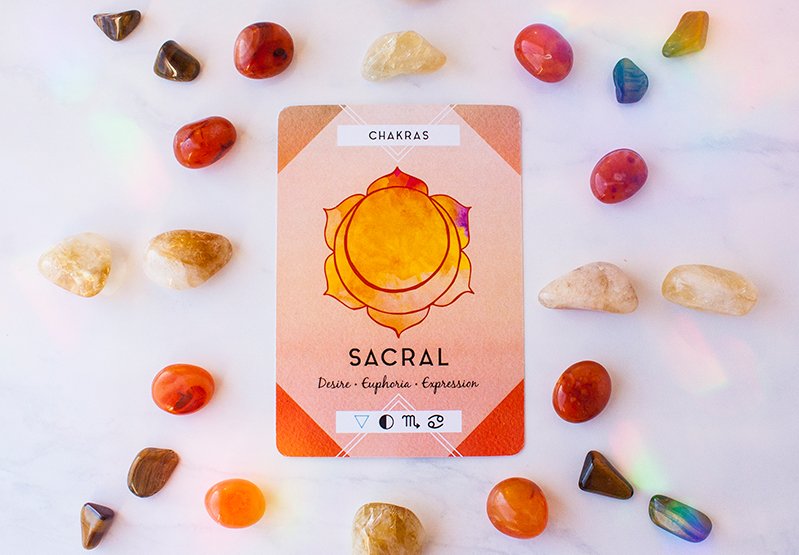
The sacral chakra, Svadhisthana, is one of the chakras I personally feel most connected to. I think in the spiritual community, we can sometimes forget how important the lower chakras are, but remember: you are a spiritual being in a physical body! So the chakras we tend to associate with our physical bodies more, like the root, sacral, and solar plexus chakras, are just as important as the higher chakras like your crown and third eye.
The sacral chakra is your center of creativity, sexuality, and feeling. It’s ruled by the element of water, and it’s located at the center of your low belly about three inches from your navel.
When this chakra is open, you’re able to feel deep pleasure in your life. You’re able to really feel the world around you and you’re connected to your emotions. You’re able to flow, expand, have healthy relationships with others, and use your creativity.
When this chakra is blocked, it may manifest as:
Disconnection from your sexuality or being ruled by your sexuality
Experiencing a lack of pleasure in your day-to-day life
Inability to connect with your creative energy
Feeling stuck in a certain feeling or mood
Dependency on a person or substance that gives you pleasure
Inability to feel your feelings or being too ruled by your emotions
If any of those sound like you, don’t worry. Our chakras are fluid, just like us, and they can change from day to day. Scroll down to get 10 ways to unblock your sacral chakra to connect with your creative and emotional flow.
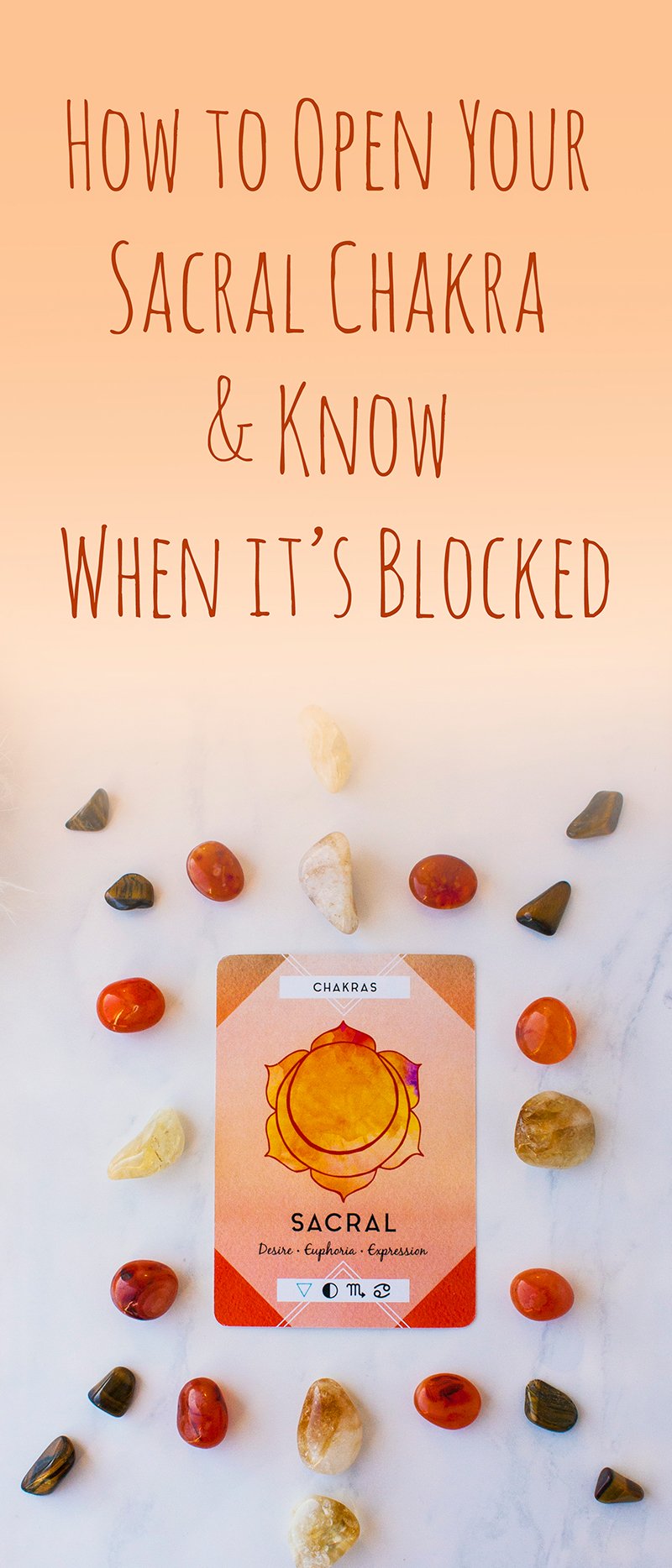
The card shown in the image is from The Ritual Deck.
Get creative
This is one of my favorite ways to open this chakra! Even if you don’t feel creative in the moment, just start creating something. It might surprise you how your energy starts to flow! Try painting, writing, drawing, coloring, collaging, creating your own movement practice, or experimenting in the kitchen.
Use scents
My go-to essential oils for opening your sacral chakra are:
Tangerine
Orange
Ylang ylang
Patchouli
Bergamot
Sandalwood
Rosewood
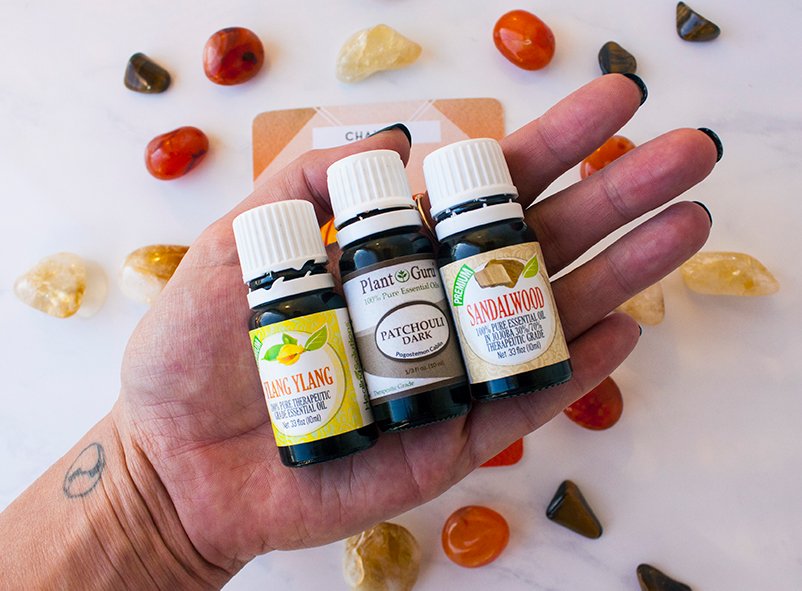
Try massaging your low belly with one or more of the oils (diluting with a carrier oil as needed), diffusing them in your space, or placing a few drops in your bath (which, bonus points, connects you with the element of water!).
Dance
I know everyone says this, but seriously, dance like no one’s watching (because no one is!). Put on your favorite music and move intuitively however feels good for you. If you’d like, incorporate some hip circles to help you get into your low belly.
Breathing into your low belly. As you’re laying down, place your hands on your low belly. With your inhale, feel your hands rise as you flood the belly with breath, sending your life force energy to this chakra. As you exhale, feel your sacral center soften, expand, and open.
Use crystals
Some crystals that help open your sacral chakra are:
Citrine
Carnelian
Orange aventurine
Orange calcite
Goldstone
Tiger’s eye
Sunstone
Peach selenite
Try sleeping with them, meditating with them on your low belly, placing them around your home, or placing a little tumbled stone in your pocket to carry with you all day.
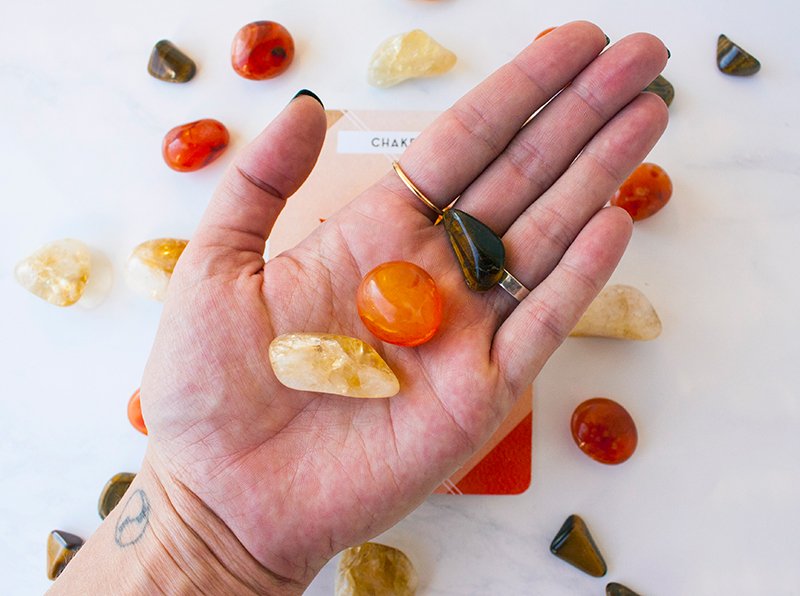
Meditation
Bring your palms to the center of your sacral chakra in your low belly, and start to take deep belly breaths into that space. With each inhale, visualize a little orange ball of light over your sacral chakra. With each exhale, visualize it opening, softening, and expanding until your entire body is surrounded by a beautiful aura of pure orange light.
Check out my Energy Reset Meditation Bundle here.
Use affirmations
Write them down, say them every day, make them the background of your phone—the options are endless! Choose an affirmation from the list below or create your own:
I am fully in my body.
Creative and sexual energy runs through me.
I am in love with life.
I am a passionate being.
I am deeply connected to my feelings.
I honor my feelings.
I honor my pleasure.

Yoga poses
Poses that stretch your hips are really helpful for opening your sacral chakra. Some of my favorites are:
Low lunge
Goddess pose
Reclining cobbler’s pose
Wide-legged standing forward fold
Frog pose
In each pose, just remember to breathe into your low belly!
Get to the root of the blockage
One of my favorite ways to get to the root of a chakra blockage is pulling tarot cards for these two simple questions:
Why is my sacral chakra blocked?
Advice for moving through the blockage
Tarot cards have such a beautiful, helpful way of getting to the heart of the matter. If you’re feeling like there’s a deep, underlying shadow or issue holding you back from fully stepping into your sexual and creative power, try this.
Play with color
The color associated with Svadhisthana is orange. Try bringing more of this color into your life by lighting orange candles, eating orange foods, wearing orange clothes, or painting your nails orange.
